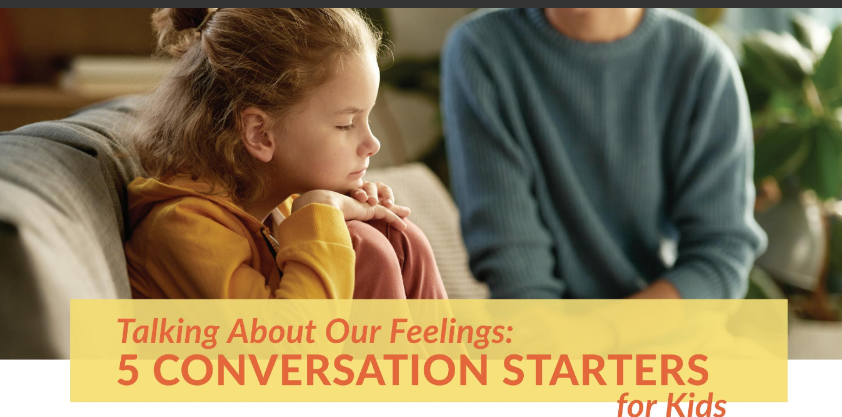Talking about your feelings sounds simple, but it is actually a skill that must be developed.
Many of us are conditioned to protect ourselves by not revealing vulnerability. For example, previous generations are known for being “tough,” and talking about emotions was not as common. Mantras like “be a man” or “women are supposed to be nurturing and nice” can send the message to children that showing emotion is a weakness or something to be ashamed of.
As parents and those who work with youth, we must talk about emotions as neither good nor bad, just something that happens as a reaction to what is going on around us. With youth mental health issues on the rise over the last several years, the time is now to begin having those conversations with our kids.
5 Conversation Starters for Kids
With this in mind, here are five ways to encourage the child in your life to be more comfortable talking about their feelings.
Model talking about YOUR feelings
Children do as we do, not what we say. We can tell them it is okay to talk about their feelings all day long, but we also need to be modeling talking about our feelings as normal and healthy. It’s okay to say, “I’m sad…I am really missing your grandpa today” or “When that person cut me off in traffic, I was really mad!”
Identify and summarize your child’s feelings
“You are frowning, yelling, and stomping your feet. You seem angry. Are you mad right now?” Also, model problem solving with associated emotions. “When I am angry, I take deep breaths, and it helps me to calm down. Would you like to take some deep breaths with me?”
Practice summarizing feelings and problem solving with fictional characters
For example, “The boy in the book looks sad. He is crying, and his head is down. What do you think he could do to help himself feel better?”
Practice talking about feelings
Instead of asking your child, “How was your day?” try asking, “Can you tell me about a time you felt happy or proud today?”
Allow your child to have feelings without trying to immediately “fix” it
For example, your child comes to you whining because the toy car won’t go. Instead of immediately picking up the car, examining for solutions, etc., ask your child, “You seem frustrated. Are you frustrated that the toy won’t do what you want it to do? What could we do to fix the problem?” It is okay and healthy to allow your child to sit with the difficult emotion for a few moments and then work to generate possible solutions.

